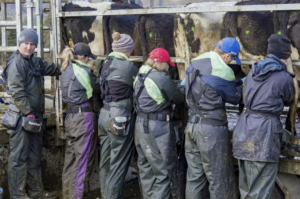It is the time of the year when we start to think about preparing for drying off the cows, and, in particular, what Dry Cow Therapy decisions need to be made this season. To make sure your cows are set up for a great milk quality season, there needs to be a meaningful discussion around how things have been this current season, and what are your aims for the upcoming one.
For the last couple of years, the veterinary and dairy farming industries have been working towards reducing the amount of antibiotic used in the dairy herd. Whole-herd Dry Cow Therapy has been an obvious target for reduction, as this accounts for a large percentage of the antibiotics used on a farm during the season. Antibiotic Dry Cow Therapy use can be successfully reduced at dry-off time, but this needs to be discussed in depth with your Vetlife vet at your Milk Quality Review/Dry Cow Consult because cow selection, drug selection and management play very large parts in a successful dry-off. We still advocate that every cow gets treated with something at dry-off, due to our experience of the results when cows are dried off with no treatment. We will discuss whether reducing antibiotic use is suitable for your farm.
There are a number of management techniques that can help reduce the occurrence of clinical mastitis in cows after drying off. These techniques can significantly improve the outcome of treatment when using Internal Teat Sealant (ITS) only, antibiotic Dry Cow Therapy (abDCT) only, and also when using a combination of ITS and abDCT therapies together. On the flip side, if these techniques are not carried out well, then your dry-off period may not be successful, resulting in mastitis immediately after dry-off and/or in the next season.
A lot of the management techniques that we have used over the years are still very relevant and are still very good general recommendations. What we have found is that, in certain situations, more specific recommendations are required, especially around hygiene, milk production levels and nutrition before and after dry-off. Your Vetlife vet is in the best position to assess your herd situation and discuss the risks and how to manage them.
There is good worthwhile information available that is relatively easy to access and allows a meaningful analysis of your herd. Do not be surprised when your vet asks you for this information. It includes:
• Bulk milk somatic cell count and production levels, in the form of third party access to supply company records
• Individual cow somatic cell counts, in the form of access to MINDA LIVE
• Clinical mastitis treatment records, from either MINDA LIVE or drug sale figures
• Bacteriological culture results, from samples taken throughout the season
Remember, mastitis is the most expensive disease to the New Zealand dairy industry, and there are plenty of different steps that can be taken to help minimize its impact on your farm. The best results come from developing a specific plan for your farm, and the best person to develop this with you is your Vetlife veterinarian.
Matt Hart
Vetlife Dunsandel
